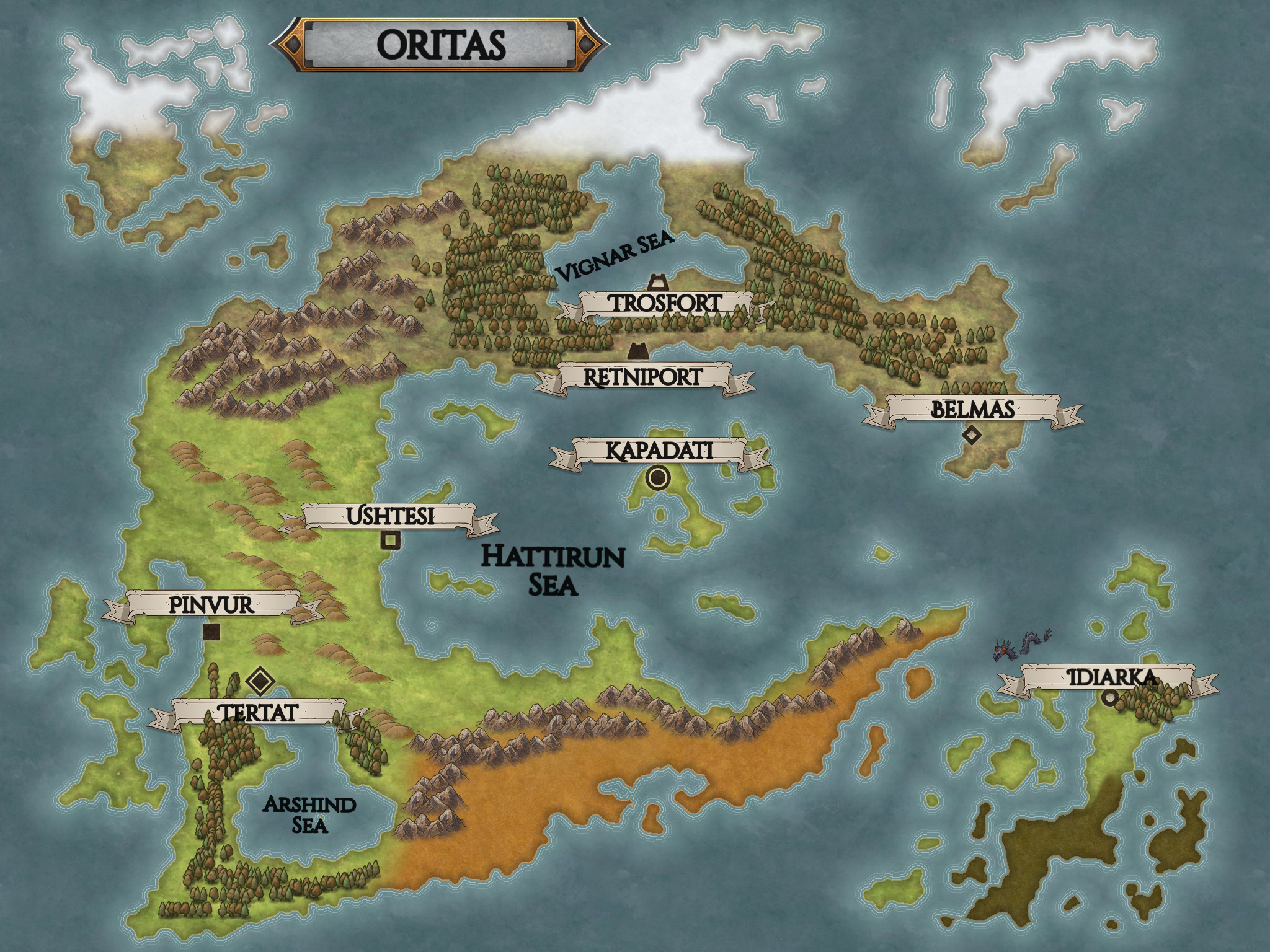Language belonging to the
Sareth, or Zísâreth when written in their native language. It doesn't feature sounds requiring the lips as Sareth mouths aren't quite as flexible as other species' so making the correct sounds takes more effort. Most sounds are formed within the mouth.
It developed among the Sareth in
Akrayt and had been distribusted across southern Oritas with migrants. Several dialects have formed, most notably the northern and southern Akraytan dialects. They remain similar but use different words for some common objects and have different phrases and idioms.
Writing System
Mâg has it's own alphabet consisting of 34 letters. This can be roughly transcribed into human script, though differences in pronunciation make it difficult to read for those unfamiliar to the language. The letters d, g, h, j, k, l, n, m, s, t, z, r and y correspond to familiar sounds. The letters represented by sh and zh correspond to the "sh" sound in "she" and the "s" sound in "vision" respectively. Similarly the letter represented by dh corresponds to the "th" sound in "the" while th represents the "th" sound in "thing"
In addition to the above, two more consonants tend to cause some confusion among non mâg speakers. They are ḽ and č. The letter č simply sounds like "ch" in "change" but ḽ is more complicated as it does not occur in any other language in Oritas. It is similar both to the "l" and "th" sounds with the air being forced around the sides of the tongue rather than over it while blocking air with the tip of the tonge against the back of the teeth.
In addition to the consonants, mâg features fifteen vowel sounds. These can be separated into three groups. They are the short vowels a, e, i, o, u; the long vowels â, ê, î, ô, û; and the others á, é, í, ó, ú.
The mâg alphabet itself features a unique glyph for each of the consonants. The short vowels are each made up of a single straight line in different orientations, noticably smaller than the consonants. The long vowels feature double lines parallel to each other while the acute vowels are a combination of two different vowels representing the sounds each one makes.
| Manner/Place |
Bilabial |
Dental |
Alveolar |
Palato-Alveolar |
Palatal |
Velar |
Glottal |
| Nasal |
m |
|
n |
|
|
|
|
| Stop |
|
|
t d |
|
|
k g |
|
| Afficative |
|
|
|
ʧ ʤ |
|
|
|
| Fricative |
|
θ ð |
sz |
ʃ ʒ |
|
|
h |
| Approximant |
|
|
|
|
j |
|
|
| Tap |
|
|
ɾ |
|
|
|
|
| Lateral Fricative |
|
|
ɬ |
|
|
|
|
| Lateral Approximant |
|
|
l |
|
|
|
|
Vowels
|
Front |
Back |
| High |
iː |
uː |
| Near-High |
ɪ |
ʊ |
| Low-Mid |
ɛː ɛ |
ʌ ɔː |
| Low |
a |
ɑː |
Mâg has four tenses. They are remote past, past, present and future.
| Future |
If starts with vowel: Prefix ks-
Else: Prefix ksiː-
ksîdrî /ksiːˈdɾiː/
will learn |
| Present |
No affix
drî /dɾiː/
learn |
| Past |
If starts with vowel: Prefix n-
Else: Prefix nɔɪ̯-
nódrî /nɔɪ̯ˈdɾiː/
learned |
| Remote Past |
If starts with vowel: Prefix th-
Else: Prefix thuː-
dhûdrî /dhuːˈdɾiː/
learned (long ago) |
Mâg also features the perfect aspect given by the word rên, meaning "finish" or "complete". For example, the sentence "I have read" becomes "Zha
rên sra" in the present perfect and "I had read" becomes "Zha
rên nósra" in the past perfect.
Mâg is a verb-subject-object (VSO) language. This means that "he(S) walked(V) the dog(O)" becomes "walked(V) he(S) the dog(O)". It features prepositions which come before the subject (eg. above her, beside him).
Nouns are either definite or indefinite. This is encoded into the noun itself so there is no word for "a" or "the". This applies to both singular and plural nouns with the indefinite singular with no modification.
|
Singular |
Plural |
| Definite |
If starts with vowel: Prefix dl-
Else: Prefix dlʌ-
dlukyînfh /dlʌˈkjiːnθ/
the dog |
f starts with vowel: Prefix z-
Else: Prefix zaɪ̯-
zíkyînfh /zaɪ̯ˈkjiːnθ/
the dogs |
| Indefinite |
No affix
kyînfh /kjiːnθ/
a dog |
Prefix uːth-
ûthkyînfh /uːthˈkjiːnθ/
some dogs |
Proper nouns such as names and places are capitalised. These nouns are exempt from the above table.
Adjectives come after the noun they are describing. For example "the tall green trees" becomes "zísrî aylô nôt" or literally
the tees tall green.
The order in which adjectives is given in the table below.
| Order |
Relating to |
Example |
Translation |
| 1 |
Number |
seven |
ye |
| 2 |
Size |
small |
thič |
| 3 |
Purpose |
cooking |
halsh |
| 4 |
Opinion |
bright |
ánêrt |
| 5 |
Shape |
round |
ets |
| 6 |
Material |
metallic |
kléa |
| 7 |
Origin |
Arkayan |
Ârčánit |
| 8 |
Age |
young |
dhûsha |
| 9 |
Colour |
red |
êrth |



Comments
Author's Notes
Made with Vulgarlang.com. Efforts have been made to make the sections understandable without reference to real world languages as these don't exist in this universe. "Human script" should be understood to mean what we call the latin alphabet.